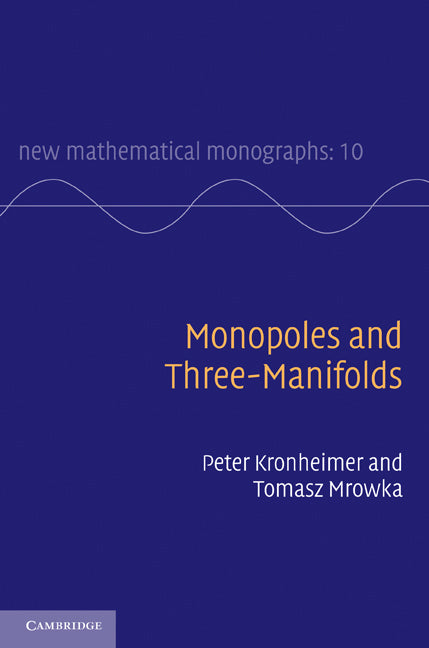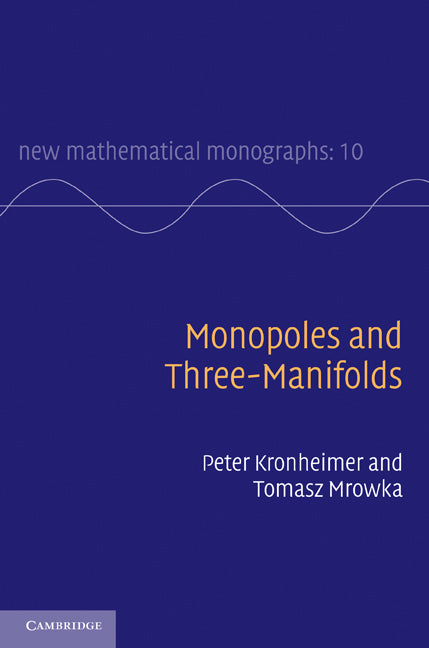Freshly Printed - allow 8 days lead
Couldn't load pickup availability
Monopoles and Three-Manifolds
A comprehensive treatment of Floer homology, based on the Seiberg–Witten equations, first published in 2007.
Peter Kronheimer (Author), Tomasz Mrowka (Author)
9780521184762, Cambridge University Press
Paperback, published 25 November 2010
808 pages, 12 b/w illus.
22.8 x 15.2 x 4.1 cm, 1.16 kg
'This book is the definitive bible for anyone wanting to learn the full story of the various Seiberg-Witten Floer homology theories … There are mathematics books that are classics. As such, they will never go out of date and never be improved. The present masterpiece is almost surely such a book.' Alexander Felshtyn, Zentralblatt MATH
Originating with Andreas Floer in the 1980s, Floer homology has proved to be an effective tool in tackling many important problems in three- and four-dimensional geometry and topology. This 2007 book provides a comprehensive treatment of Floer homology, based on the Seiberg–Witten monopole equations. After first providing an overview of the results, the authors develop the analytic properties of the Seiberg–Witten equations, assuming only a basic grounding in differential geometry and analysis. The Floer groups of a general three-manifold are then defined and their properties studied in detail. Two final chapters are devoted to the calculation of Floer groups and to applications of the theory in topology. Suitable for beginning graduate students and researchers, this book provides a full discussion of a central part of the study of the topology of manifolds.
Preface
1. Outlines
2. The Seiberg–Witten equations and compactness
3. Hilbert manifolds and perturbations
4. Moduli spaces and transversality
5. Compactness and gluing
6. Floer homology
7. Cobordisms and invariance
8. Non-exact perturbations
9. Calculations
10. Further developments
References
Glossary of notation
Index.


